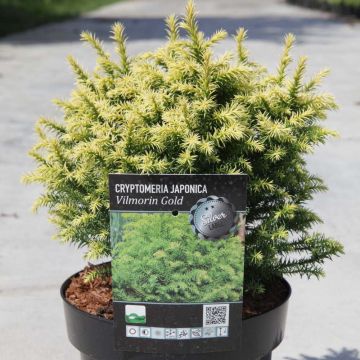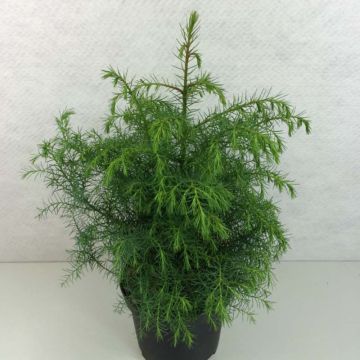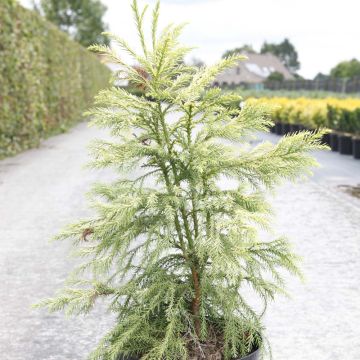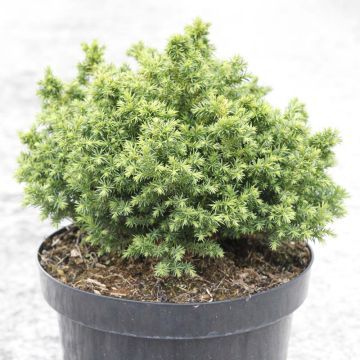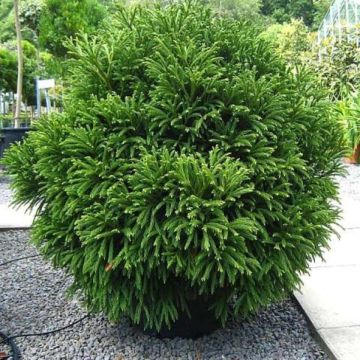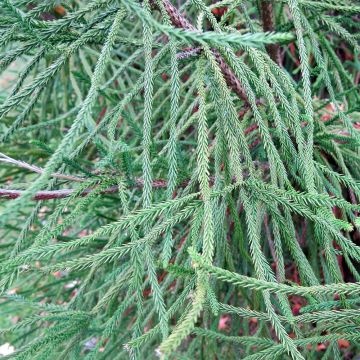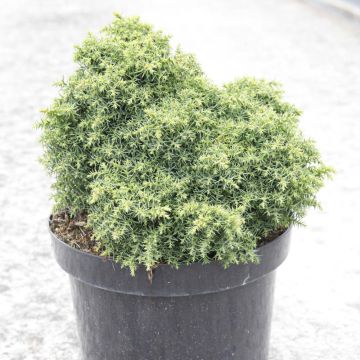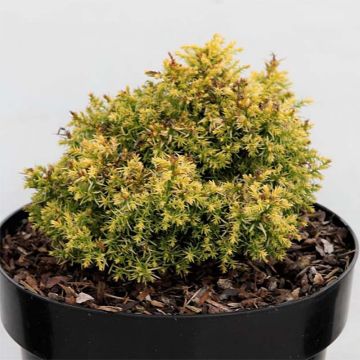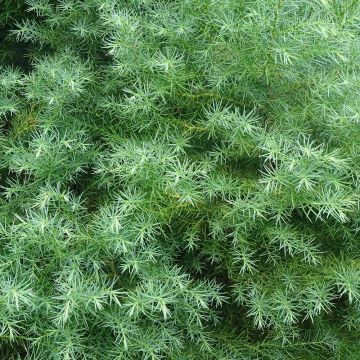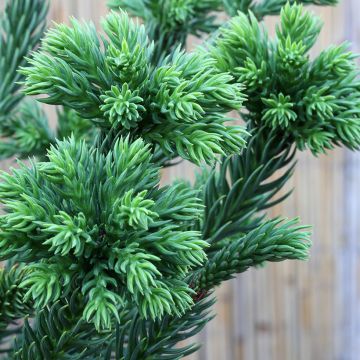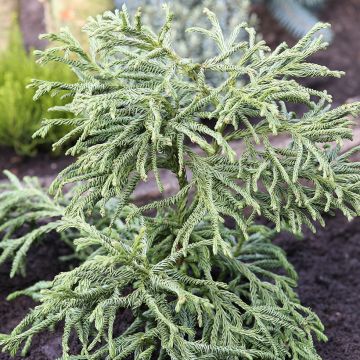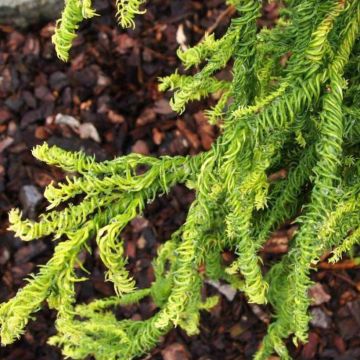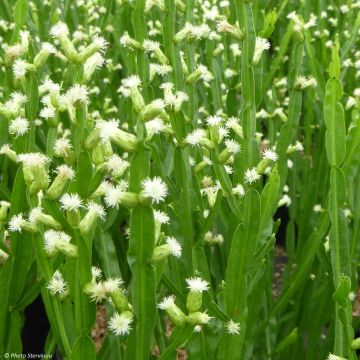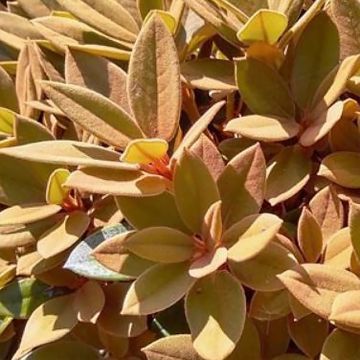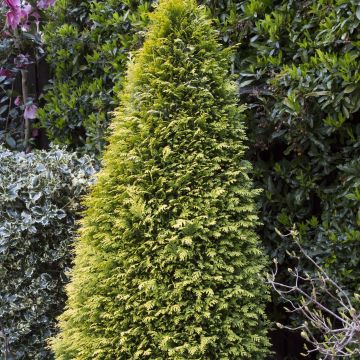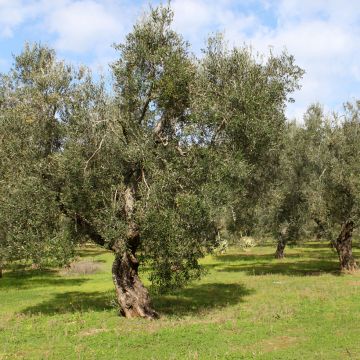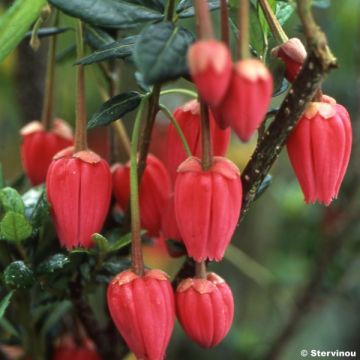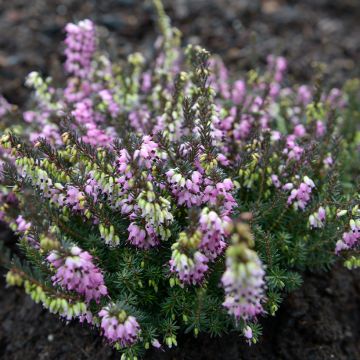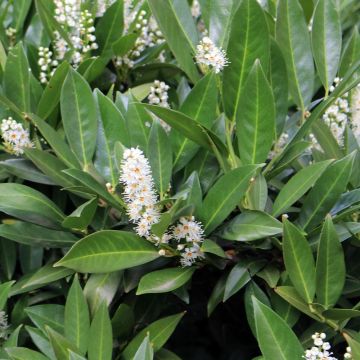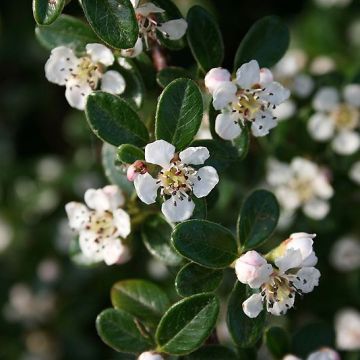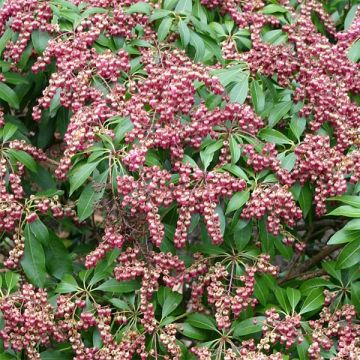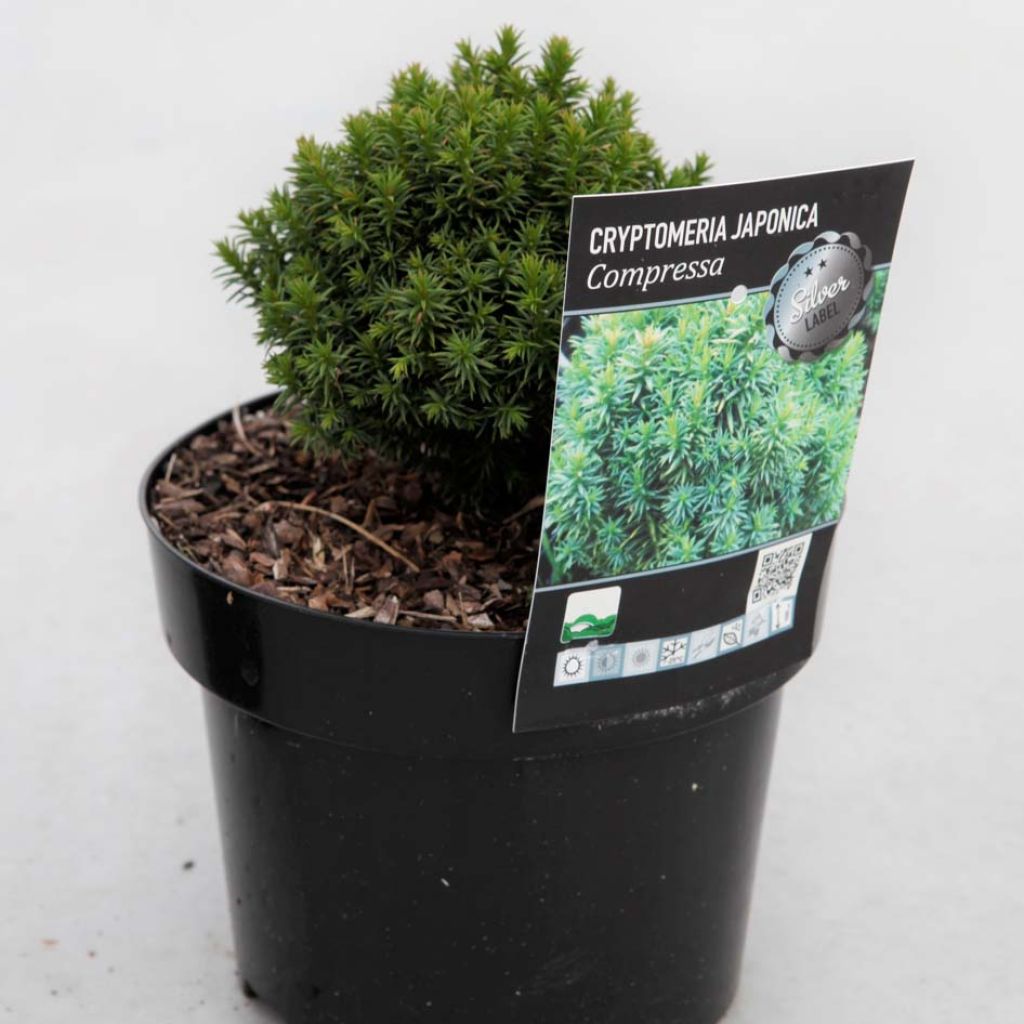

Cryptomeria japonica Compressa
Cryptomeria japonica Compressa
Cryptomeria japonica Compressa
Japanese Cedar, Sugi, Japanese Redwood
surprised by its small pruning, a dwarf variety,
Dominique P., 21/10/2018
Why not try an alternative variety in stock?
View all →This plant carries a 24 months recovery warranty
More information
We guarantee the quality of our plants for a full growing cycle, and will replace at our expense any plant that fails to recover under normal climatic and planting conditions.
From €5.90 for pickup delivery and €6.90 for home delivery
Express home delivery from €8.90.
From €5.90 for pickup delivery and €6.90 for home delivery
Express home delivery from €8.90.

Does this plant fit my garden?
Set up your Plantfit profile →
Description
Cryptomeria japonica Compressa is a true dwarf form of the Japanese Cedar. Growing very slowly, this small conifer forms a very dense and perfectly regular ball, and is adorned with dark green needle-like foliage that takes on beautiful bronze tones in the cold. Low maintenance and hardy, it allows for unexpected combinations in rockeries and alpine gardens. It grows in full sun, in a well-drained ordinary soil that is not too dry to moist.
Cryptomeria japonica is a very large conifer of the Taxodiaceae family native to Japan. In its country of origin, this tree is commonly planted around religious temples. It is a species from a light and mild oceanic climate that is humid all year round and mild in winter. In Asia, this forest tree of sequoia-like appearance can reach up to 60 m (196 ft 11 in) in height, with a trunk of 4 m (13 ft 1 in) in diameter covered with a red-brown bark that peels off in vertical strips. In northern latitudes, it still reaches 30 to 40 m (98 ft 5 in to 131 ft 2 in) in height. The evergreen foliage of this conifer is composed of spirally arranged needles around the branchlets. The Japanese Cedar has given rise to numerous cultivars selected for their small size, the appearance of their foliage, their cold resistance, and their better tolerance to our soils and average climates.
The 'Compressa' variety, as its name suggests, resembles a highly compressed cryptomeria. Growing very slowly, it will reach 40 cm (15.7 in) in all directions at the age of 5 years and hardly more than a few metres after many years. Its habit is remarkably globose, composed of dense vegetation. Its foliage is also very dense and particularly fine, covering numerous regular branchlets adorned with rosettes of dark green needles at their tips. It turns bronze, brown, red, and copper tones in autumn and winter. This variety is hardy down to -20 °C (-4 °F).
Cryptomeria japonica Compressa deserves to be better known and planted in gardens, even the smallest ones. With its ease of cultivation, its personality, and its very compact growth, it is a perfect plant for rockeries, flower beds, and terraces. This plant goes well with large stones, geometric lines, and masonry structures. It can be associated with other shrubs for rockeries (Abelia prostrata, Berberis darwinii or thunbergii atropurpurea Nana, heathers), dwarf conifers with prostrate, globose, or columnar habit, of different colours. The graphic qualities of conifers naturally impose themselves in the design of a contemporary garden, which prefers the aesthetics of forms, silhouettes, and textures over the dance of blooms. These plants with reassuring permanence durably structure a flower bed, mark the paths and border the terrace, easily replacing the strong presence of trimmed boxwood or holly. The key is to play with volumes and colours.
Report an error about the product description
Plant habit
Foliage
Safety measures
Botanical data
Cryptomeria
japonica
Compressa
Taxaceae
Japanese Cedar, Sugi, Japanese Redwood
Cultivar or hybrid
atteinterespiratoire
Cette plante peut entraîner des symptômes allergiques.
Evitez de la planter si vous ou vos proches souffrez de rhinite saisonnière ("rhume des foins").
Davantage d'informations sur https://plantes-risque.info
Other Cryptomeria
Planting and care
Cryptomeria japonica can be planted from September to November and from February to June. It prefers ordinary soil without excessive limestone that is well drained and preferably moist, as well as rather fertile, even slightly limestone, neutral or acidic soil. It fears excessively dry or overly shallow soils. Choose a sunny or, at worst, semi-shaded location. This variety is resistant to wind. Soak the root balls well before planting. Add organic compost when planting and water generously in the first few years, and in case of prolonged drought. Apply a special conifer fertiliser every year in April and cultivate the soil in summer. This conifer is hardy down to at least -15 °C (5 °F). Pruning is not necessary.
Planting period
Intended location
Care
-
, onOrder confirmed
Reply from on Promesse de fleurs
Evergreen shrubs
Haven't found what you were looking for?
Hardiness is the lowest winter temperature a plant can endure without suffering serious damage or even dying. However, hardiness is affected by location (a sheltered area, such as a patio), protection (winter cover) and soil type (hardiness is improved by well-drained soil).

Photo Sharing Terms & Conditions
In order to encourage gardeners to interact and share their experiences, Promesse de fleurs offers various media enabling content to be uploaded onto its Site - in particular via the ‘Photo sharing’ module.
The User agrees to refrain from:
- Posting any content that is illegal, prejudicial, insulting, racist, inciteful to hatred, revisionist, contrary to public decency, that infringes on privacy or on the privacy rights of third parties, in particular the publicity rights of persons and goods, intellectual property rights, or the right to privacy.
- Submitting content on behalf of a third party;
- Impersonate the identity of a third party and/or publish any personal information about a third party;
In general, the User undertakes to refrain from any unethical behaviour.
All Content (in particular text, comments, files, images, photos, videos, creative works, etc.), which may be subject to property or intellectual property rights, image or other private rights, shall remain the property of the User, subject to the limited rights granted by the terms of the licence granted by Promesse de fleurs as stated below. Users are at liberty to publish or not to publish such Content on the Site, notably via the ‘Photo Sharing’ facility, and accept that this Content shall be made public and freely accessible, notably on the Internet.
Users further acknowledge, undertake to have ,and guarantee that they hold all necessary rights and permissions to publish such material on the Site, in particular with regard to the legislation in force pertaining to any privacy, property, intellectual property, image, or contractual rights, or rights of any other nature. By publishing such Content on the Site, Users acknowledge accepting full liability as publishers of the Content within the meaning of the law, and grant Promesse de fleurs, free of charge, an inclusive, worldwide licence for the said Content for the entire duration of its publication, including all reproduction, representation, up/downloading, displaying, performing, transmission, and storage rights.
Users also grant permission for their name to be linked to the Content and accept that this link may not always be made available.
By engaging in posting material, Users consent to their Content becoming automatically accessible on the Internet, in particular on other sites and/or blogs and/or web pages of the Promesse de fleurs site, including in particular social pages and the Promesse de fleurs catalogue.
Users may secure the removal of entrusted content free of charge by issuing a simple request via our contact form.
The flowering period indicated on our website applies to countries and regions located in USDA zone 8 (France, the United Kingdom, Ireland, the Netherlands, etc.)
It will vary according to where you live:
- In zones 9 to 10 (Italy, Spain, Greece, etc.), flowering will occur about 2 to 4 weeks earlier.
- In zones 6 to 7 (Germany, Poland, Slovenia, and lower mountainous regions), flowering will be delayed by 2 to 3 weeks.
- In zone 5 (Central Europe, Scandinavia), blooming will be delayed by 3 to 5 weeks.
In temperate climates, pruning of spring-flowering shrubs (forsythia, spireas, etc.) should be done just after flowering.
Pruning of summer-flowering shrubs (Indian Lilac, Perovskia, etc.) can be done in winter or spring.
In cold regions as well as with frost-sensitive plants, avoid pruning too early when severe frosts may still occur.
The planting period indicated on our website applies to countries and regions located in USDA zone 8 (France, United Kingdom, Ireland, Netherlands).
It will vary according to where you live:
- In Mediterranean zones (Marseille, Madrid, Milan, etc.), autumn and winter are the best planting periods.
- In continental zones (Strasbourg, Munich, Vienna, etc.), delay planting by 2 to 3 weeks in spring and bring it forward by 2 to 4 weeks in autumn.
- In mountainous regions (the Alps, Pyrenees, Carpathians, etc.), it is best to plant in late spring (May-June) or late summer (August-September).
The harvesting period indicated on our website applies to countries and regions in USDA zone 8 (France, England, Ireland, the Netherlands).
In colder areas (Scandinavia, Poland, Austria...) fruit and vegetable harvests are likely to be delayed by 3-4 weeks.
In warmer areas (Italy, Spain, Greece, etc.), harvesting will probably take place earlier, depending on weather conditions.
The sowing periods indicated on our website apply to countries and regions within USDA Zone 8 (France, UK, Ireland, Netherlands).
In colder areas (Scandinavia, Poland, Austria...), delay any outdoor sowing by 3-4 weeks, or sow under glass.
In warmer climes (Italy, Spain, Greece, etc.), bring outdoor sowing forward by a few weeks.

































